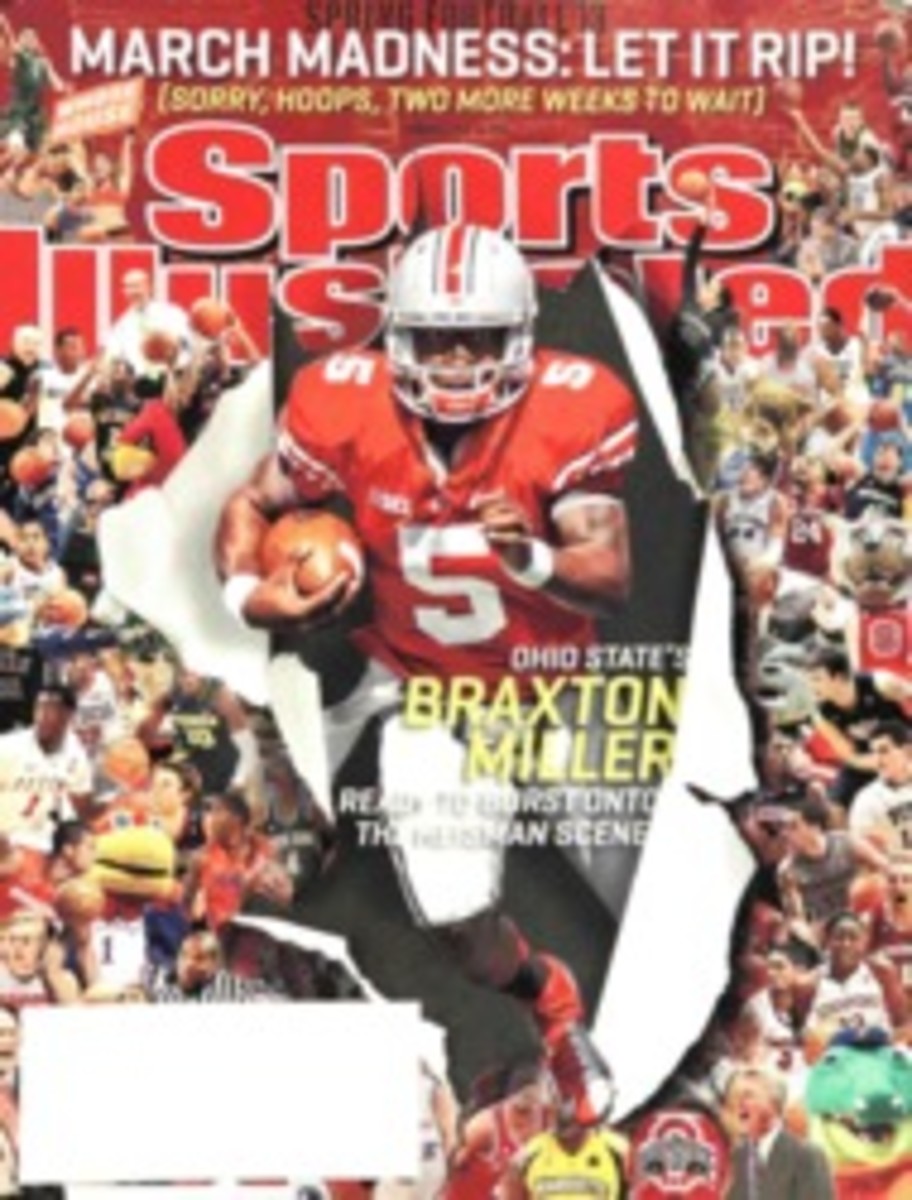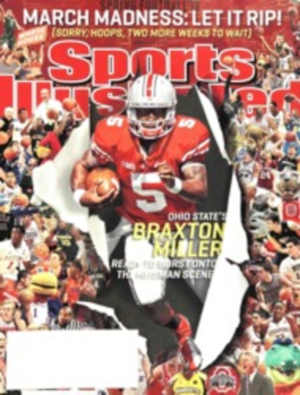
Too Close For Comfort
Let's start by saying that nobody went to Daytona last Saturday just to see a 12-car pileup on the last lap and, moreover, nobody expected, as part of their ticket price, the front end of Kyle Larson's car to hurtle into the stands at straightaway velocity. But let's also say that nobody, except for a couple of dozen people on the business end of Larson's 200-mph flying junkyard, was especially surprised.
This, after all, is the implicit promise of NASCAR in general and Daytona in particular, the occasional flare of violence, Day-Glo sheet metal shredding and twisting, a wheel forlornly rolling down the asphalt, a driver finally emerging from his expensive pile of spare parts with a thumbs-up. What is the point of traveling that fast, in a throbbing gridlock, if cars don't, at least every once in a while, give some consideration to the laws of motion and, having traded paint as they like to say, barrel-roll to the finish, Ricky Bobby--style? What is the point of Daytona if not the catharsis of collision, that hugely satisfying release—car-on-car, man-on-wall, pick your preferred impact—after being so spring-wound, lap by lap?
Of course, this time was a little different, actual citizens finding themselves in the service of wreck porn, one more YouTube video to amaze and appall. Larson's front end and other debris, including a tire (which did not roll forlornly in this case), sent 14 spectators to the hospital with injuries, including two who arrived in critical condition (since upgraded to stable). For many this incident will highlight the need for improved spectator safety, higher and stronger fences probably. But for most, this will simply confirm Daytona's built-for-catastrophe reputation, or rather, if you're one to take a more cynical view of the news, NASCAR bloodlust.
Daytona, along with Talladega, is all too susceptible to just this kind of conclusion. At 2.5 and 2.66 miles around, respectively, these two high-banked tri-ovals are so encouraging of speed that the cars racing there are by rule fitted with a restrictor plate, a kind of governor, lest they reach escape velocity. But plate racing means pack racing, where a mere bobble can lead to the Big One. The drivers are mindful of this, of course, and generally try to play nice until the final laps, when, restrictor (and restrictions) be damned, they make one last scramble, at 200 mph, for the finish.
So what do you think would happen? This, this is what happens. Last year in the four Sprint Cup races at Daytona and Talladega there were seven wrecks in the final 15 laps, including a 25-car melee at Talladega in October and a 15-car demolition derby on the last lap of the July race at Daytona. In the last three years at the two tracks, there have been 22 wrecks in the last 15 laps. If you just want to consider Daytona, there have been 10 wrecks with three laps or less to go in the last six Cup races, three of them involving 15 cars. The inevitable last-lap wreck in the 500 on Sunday—no injuries, thankfully—occurred back in the pack, so the leaders weren't affected.
So what happened Saturday in the Nationwide Series race, except for the sorry fact that spectators were involved, was as ordained an event, as predictable a finish, as is possible. There must be a page in a mechanical physics textbook that has the formula for producing exactly this level of mayhem. You simply cannot put these forces into this kind of motion on this kind of track and reasonably expect a different outcome. There will be sheet metal.
So far, at least since Dale Earnhardt died there in 2001 (on the final lap—it's on YouTube), most of these crashes have been relatively harmless, spoof-worthy even. (Talladega Nights, with one wreck so long and complicated it must be interrupted by commercial, plays almost as a documentary.) Since Earnhardt's death NASCAR has implemented all manner of safety precautions, even as it's managed to encourage player contact. (When the sport's allure dimmed a few years ago, NASCAR famously advised the drivers to "have at it.") That's a dangerous line to straddle, of course, and the fact that nobody has died in a crash at a top-level NASCAR race—in a car or in the stands—since is attributable not only to NASCAR's diligence, but also (and this is the scary part) to luck. Something more deadly than Larson's shrapnel seems inevitable; our guilt-free enjoyment is going to be drastically challenged.
But NASCAR is not going to blow up Daytona or Talladega. That's one safety precaution too far. NASCAR understands, perhaps even better than we do, that actual danger, the very real possibility of death and destruction, underpins the sport's appeal. It's not real, or very important, without that threat. Actual mayhem doesn't have to happen all the time—in fact, it can happen hardly ever. But it does have to happen, every once in a while, so that the public's faith in the authenticity of this high-test carnival can be refreshed.
What happened Saturday was regrettable, of course, but also necessary, a reminder that everybody really is playing for keeps, that there is some reality to this reality show. That's why Daytona exists. What would be the point otherwise, going around in a circle like that? I mean, anybody remember who won that race?
SIGN OF THE APOCALYPSE
A wounded veteran of the Iraq war chose the Cubs' logo instead of an iris for his prosthetic eye.
PHOTO
JEFF SINER/MCT/ZUMAPRESS.COM

